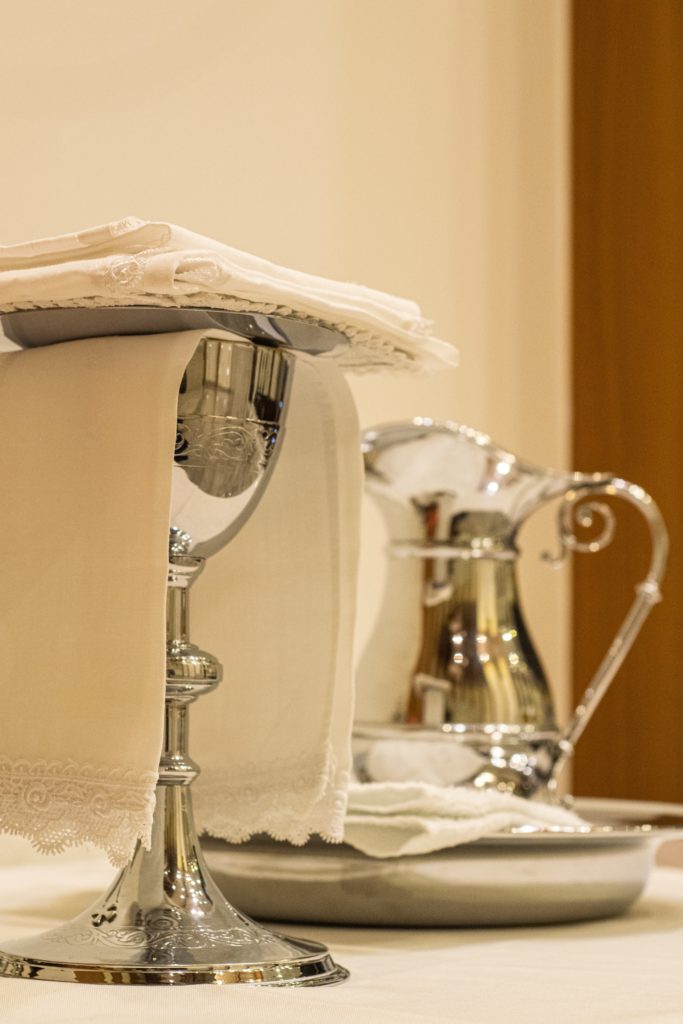Traditionis custodes
Traditionis custodes is the name of the motu proprio issued by Pope Francis in which he ordered Bishops to reduce the use of the pre-Vatican II liturgy. I was not going to write about this because I didn’t want to take on the Pope about something else that I thought was a mistake. But then I read Rita Ferrone’s article in Commonweal.
Originally, I had thought this only a political move against the traditionalist faction, which it is. Allowing groups who want to undermine your papacy to gather for rituals that cement their unity seems like a bad idea, but I still don’t like such naked exercises of power.
But Ferrone puts this document in context: “Vatican II’s opening to the world—its commitment to ecumenism, interfaith dialogue, and discerning the signs of the times—has been sharply criticized and rejected by advocates for the older rites.” She writes much more about the opposition to Francis, but this is the key to her argument, and what we’ve known all along: the unfortunately sainted Popes didn’t really know what to do with the windows open to the world that the one saint who deserved it, John XXIII, engineered.

What Francis did before he issued this directive was to survey the bishops of the world about the document promulgated Benedict XVI, allowing for a return to the rite of Pope Pius V (1566-1572), as modified by John XXIII in 1962. I have no doubt that John would have thoroughly endorsed the post-conciliar version put forth by Paul VI, and I know that John Paul II began the push for what Benedict XVI called the “Extraordinary Form” to placate traditionalists. Enough Popes for you?
When John Paul II and Benedict XIV consulted beyond the Vatican about the desirability of allowing the traditional rites, they were discouraged from doing so. If they had asked me, I would have said that there should have been a “Vatican II” rite to turn back the grim 2010 GIRM (General Instruction of the Roman Missal), not to mention the dismal translations that followed.
The actual survey results of Francis’s consultation have not been released, with one exception: “In a nice turn of phrase, the French bishops reported that those who desired the older rites were ‘pacified,’ but not reconciled,” according to Ferrone. But the results must have indicated that the bishops saw the situation as a threat to the unity of the church, and spurred Francis to issue this directive.
Ferrone summarizes the situation in the United States: “which has the world’s highest proportion of locations offering the older rites. Instead of promoting greater harmony with and closeness to the universal Church, broad availability of the older rites has been used as an opportunity to create a ‘church within a Church,’ a community apart from the mainstream. Dubious pastoral practices have attended this development, such as using the Baltimore Catechism instead of the Catechism of the Catholic Church, or reading the Douay-Reims Bible in preference to modern Scripture translations. It is not just a matter of lace and Latin. A reactionary thought world is being cultivated as well.”
I quote this at such length because it raises questions about what we are doing in our feminist liturgies. My guess is that the US has the most intentional Eucharistic communities in the world, and the most highly developed networks of alternative Catholic churches like the Ecumenical Catholic Communion. If we use a catechism at all, we prefer the Dutch; but generally we rely on scholarship generated by the vast array of those who began to think about the church with the openness inspired by Vatican II, but not limited by it. We read scripture translations we have made or found, and not necessarily those the universal church is reading. Sometimes not scripture at all. Not much lace or Latin; rather pottery and textiles made by indigenous peoples. Our thought world looks to our own creativity. In it, we build our own communities inspired by the egalitarian early church, and we ordain our own leaders.
Because of this motu proprio, I understand more about Francis. We’re not nearly as powerful in the institutional church as the traditionalists, but if we were, we’d be as dangerous to his “thought world” as they are. He realizes that we need to be “pacified” and moves along both the liturgical path with lectors and acolytes – a great step forward in the spirit of Vatican II, but, oh, so minimal – and the bureaucratic path of appointments at the Vatican and in an infinite number of positions that the disappearing male priestly caste used to fill. Neither path begins to “reconcile” us.
Yet we, or at least I, consider ourselves Catholic. We are on a spectrum of affiliation. Certainly it is the church of John XXIII which inspires us but cannot contain us. We model what we believe our church can be. We are the guardians of these traditions, traditionis custodes.


4 Responses
A return to traditional rights is a euphemism for excluding women from the priesthood and limiting the participation of its followers!
I prefer the short-lived breath of fresh air brought about by Vatican II and its message of egalitarianism and harmony!
A concise and tightly framed essay that taught me what’s afoot in the innerchambets of the Church I used to experience only from afar before you introduced me to NCR and CCS. Your conclusion is spot on: a cliche, I know, that is like “hitting the nail on the head” and “dotting an I” and saying “right on. ” You leave one satisfied. I wish I were able to bring your thoughts to the Republican Catholic pew dwellers. Thank you again.
Thanks for explaining what is actually being said, and to whom, in this latest document. I hope that our church of the future will honor the spirit of John XXIII and Vatican II and be more inclusive and diverse. The pursuit of universality should not be understood as demanding uniformity!
As a former Trad Catholic and currently Unchurched catholic, I believe Pope Francis is dealing with real issues the Church faces. I personally disliked the ‘church within a Church’ concept is peddled under the name of Charisms. Each of the Apostolic approved groups(the ones I encountered) just indulge in Apocalyptic talk and rituals that are hardly relevant or engaging the issues of the times we live in.